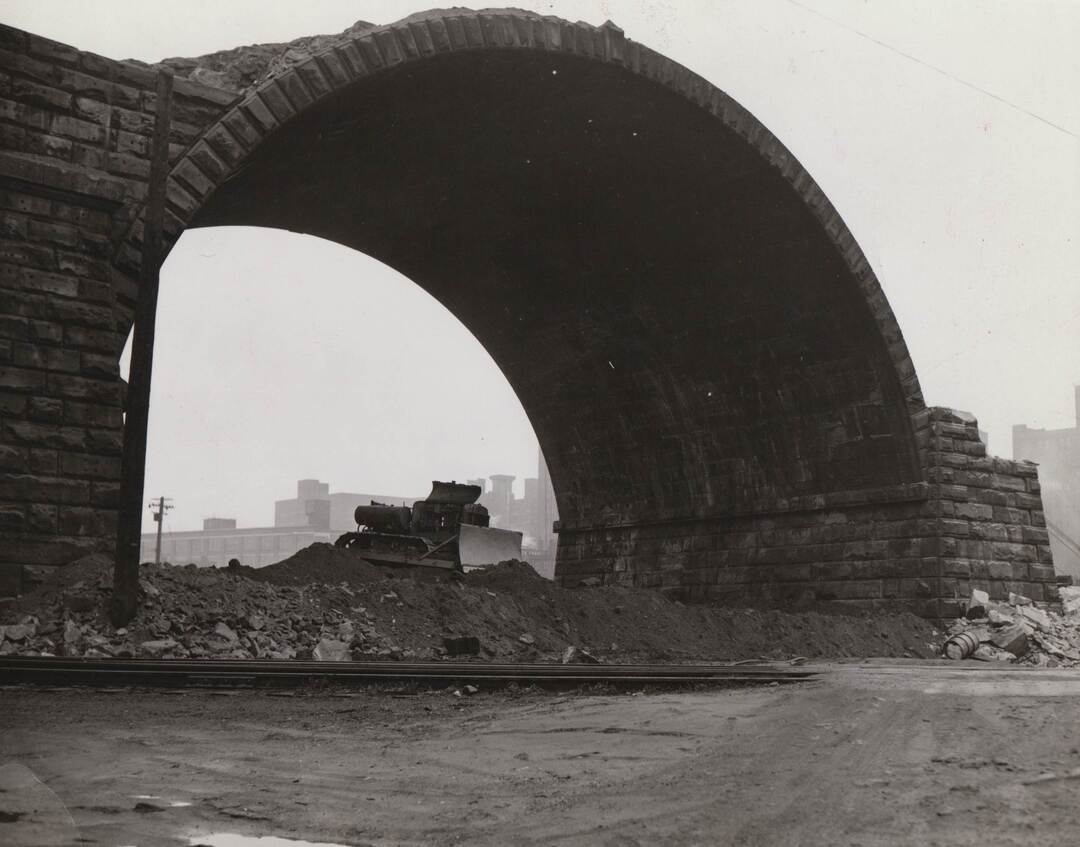
Clevelanders met the opening of the Superior Viaduct in December 1878 with great fanfare, celebrating the city's first high-level bridge. The bridge in many ways symbolized Cleveland's continuing economic growth and development into a major American city. Prior to the Viaduct's opening, low-level bridges were the only way for vehicles to cross the Cuyahoga River. To approach these bridges, commuters had to navigate steep valley walls. Moreover, bridge traffic would come to a halt with the passing of each and every boat. While the Superior Viaduct's central span still had to swing open several times a day to let taller ships through, it was a vast improvement over the older bridges.
The building of the Superior Viaduct began in March 1875, three years after city residents voted to fund its construction. Costs eventually came to a little over two million dollars. Despite all its grandeur, the viaduct became outdated with the opening of the Detroit-Superior Bridge in 1917. That bridge was built high enough to let even the larger boats pass underneath without disturbing traffic.
The viaduct was closed to cross-river traffic once and for all when its center span was removed in 1923. Over time, the once-celebrated structure was dismantled. Today, a number of the stone arches and other components of the viaduct's western approach are all that remain.
Video
Images






